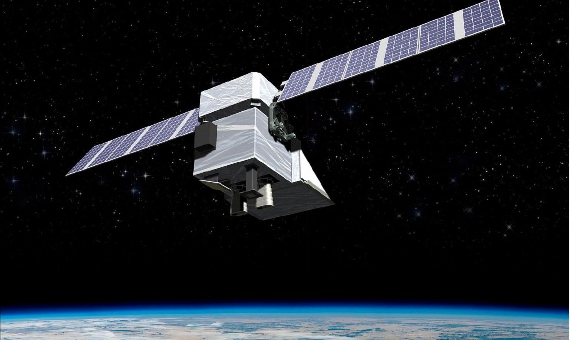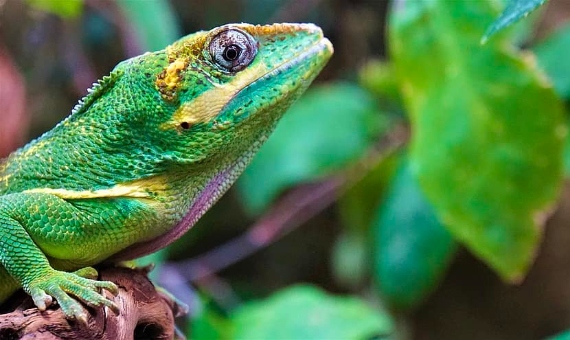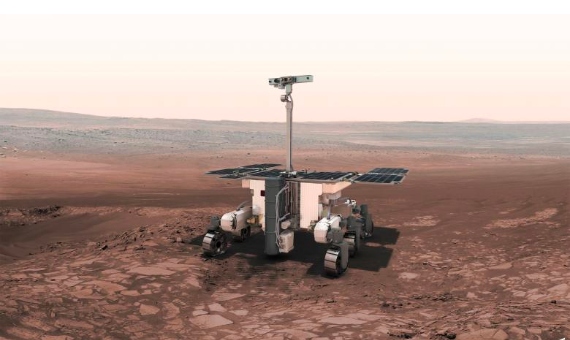If only we didn’t know what the dominant field of science will be in 2022. But, unfortunately, for another year we can be sure that the SARS-CoV-2 coronavirus and COVID-19 will continue to be the focus of research and public interest, although the growing arsenal of science resources targeted against this health catastrophe brings us ever closer to a still uncertain end to the pandemic. As for other science news, the climate emergency, space exploration— especially lunar exploration—and the physics of large-scale facilities will be safe bet for 2022; however, as always, perhaps the biggest surprises will come from what we cannot anticipate.
Closer to the end?
The year 2021 has ended with a new variant of SARS-CoV-2 spreading rampantly around the world. Omicron has challenged not only the power of our weapons against the pandemic, but also some of the ideas about the possible evolution of the virus. Scientific studies have yet to confirm that it is more transmissible—which already seems in little doubt—and whether in turn it is milder, as claimed, or whether it is the immunity acquired through infection or vaccination that is keeping symptoms at bay in much of the population.
Meanwhile, scientists are trying to predict how SARS-CoV-2 will behave in the future. The hypothesis that it will never disappear, but will eventually become endemic, has been accepted since the beginning of the pandemic, but there is no unanimity about the likelihood of the emergence of more dangerous variants. The logical process of virus evolution dictated an initial increase in transmissibility in an unimmunised population, followed by an increased ability to evade the immune system once vaccines and infection have become widespread. This prediction has come true, but while some scientists believe it is possible that Omicron is the final variant of concern, others are more cautious.

However, experts warn that the greatest risk lies in the unequal distribution of vaccines: almost half of the world’s population, especially in developing countries, has not yet had access to a single dose, and this is a serious handicap that undermines the global fight against the pandemic and encourages the emergence of new variants. At the same time, there is debate about the optimal future of vaccination strategies, whether regular boosters will suffice, whether vaccines will need to be adapted to emerging variants, or whether a new universal vaccine against coronaviruses should be favoured.
In addition, if 2021 was the year of the first vaccines, in 2022 we should expect not only a wider and more diverse supply of these drugs, but also a wider roll-out of oral antivirals and other drugs that have already begun to be approved. All of this comes with one remaining unknown that worries many experts: while much is now understood about the coronavirus and its infection, the almost unknown spectre of long or persistent Covid in recovered patients still lurks in the shadows.
New test for the climate
The 26th United Nations climate change conference, or COP26, ended in November in Glasgow with a bittersweet feeling: nations signed up to a new pact to cut emissions by 45% by 2030 compared to 2010, but scientists warned that it was not enough to meet the Paris agreement’s targets—keeping global warming well below 2°C—and climate activists expressed dissatisfaction. In 2022, it will be necessary to see whether the commitments to reduce emissions and to monitor the progress made will begin to materialise. This monitoring will now intensify from high overhead: environmental organisations such as the Environmental Defense Fund and Carbon Mapper have taken on the task of studying the health of the climate from space. The former is set to launch MethaneSAT in October to monitor methane emissions, while the latter is preparing a constellation of satellites to record methane and CO2 emissions.

The sixth assessment report of the UN’s Intergovernmental Panel on Climate Change (IPCC), the first instalment of which was released last year and which warned of the increased frequency of extreme and destructive weather events, will be completed in 2022. There is no doubt that the final conclusions of the full report will be alarming, but they should at least serve as a wake-up call for COP27, to be held in November this year in the Egyptian city of Sharm El-Sheikh, to close with more radical and ambitious commitments in the fight against the climate emergency.
Healing the biodiversity wound
Staying on the environmental theme, this will be the year to start making amends for another of humanity’s great failures. In 2020, the UN ended its Decade of Biodiversity by recognising that most of the targets set in 2010 in Aichi (Japan) by the Convention on Biological Diversity had not been met, and that the loss of species has continued to grow at an accelerating rate. The COP15 on this issue, originally planned for 2020 in Kunming (China), had to be postponed because of the pandemic. In October 2021, it was reduced to a virtual meeting that should be completed in April and May of this year with the establishment of a new set of objectives to halt the ongoing extinction of species by 2050.

At the moment, the expansion of the Omicron variant means that the meeting may not take place, but the one million species of animals and plants threatened with extinction due to human activity cannot wait any longer. A new initiative could also help to combat the deterioration of life on the planet: in February, the UN is due to vote on setting up a scientific panel similar to the IPCC in order to monitor pollution and waste, which would, among other things, help to tackle the growing problem of persistent organic pollutants.
After Mars, the Moon
2021 was the year when the Martian soil ceased to be the exclusive territory of NASA’s instruments, with the success of China’s Tianwen-1 mission and its Zhurong rover. The year that has just ended was particularly prodigal in terms of missions to the red planet, which will be joined in 2022 by one more long-awaited mission: the second phase of the European-Russian ExoMars mission, whose first segment in 2016 was successful with its orbiter, but failed with the Schiaparelli lander. In this second phase, the Rosalind Franklin rover, named after the co-discoverer of the structure of DNA, should take off for Mars in September, after its planned launch in 2020 was postponed due to a problem with the parachutes. If all goes according to current plans, by June 2023 Europe will finally have a presence on the Martian soil with a mission to analyse the planet’s habitability and study whether it has hosted life in the past.

Just as in 2021 the focus of space exploration was on Mars, 2022 will see a new destination, or more precisely the reconquest of an old one: the Moon. Likely in the summer, the Artemis I mission will take the first step towards a return to our satellite. It will be the litmus test for the new NASA vehicles that will be tasked with achieving it: the Space Launch System rocket and the Orion spacecraft, although still without astronauts on board; for the first manned mission we will have to wait two more years. Before that, in March 2022, a microwave oven-sized satellite called CAPSTONE will begin to pave the way for Gateway, the future Moon-orbiting outpost.
These NASA projects will be joined by several other lunar landing attempts by robotic rovers: India’s third Chandrayaan mission, Russia’s Luna 25, Japan’s SLIM, the United Arab Emirates’ Rashid rover—in collaboration with the Japanese company ispace—and two US start-up projects: Astrobotic Technology’s Peregrine lunar lander and Intuitive Machines’ Nova-C. Topping it off, the Korean lunar programme will be inaugurated with the Korea Pathfinder Lunar Orbiter, which will lift off aboard a SpaceX Falcon 9 rocket.
But while the Moon is undoubtedly the hot space destination in 2022, we should not lose sight of our own terrestrial orbit, where we will also see major developments. SpaceX’s enormous Starship rocket, designed for future Mars missions, will make its orbital debut this year, and China is also expected to complete its “celestial palace”, the Tiangong space station. And, of course, following the successful Christmas launch of NASA, ESA and the Canadian Space Agency’s new James Webb Space Telescope, this year’s observations from the largest eye ever sent by humans into space will begin to provide work for eager scientists and to delight us with its images.
Large-scale physics
Finally, 2022 will also be a productive year for large-scale physics. After a long maintenance pause that began in 2018 and has been extended longer than expected due to the pandemic, the largest machine in history, the Large Hadron Collider (LHC) at the European Laboratory for Particle Physics (CERN), will restart in June. Improvements to the CMS and ATLAS experiments will increase the volume of data that can be collected from the millions of proton collisions per second.

Another big science project will also resume activity later this year, the detection of gravitational waves, joining the forces of the two LIGO observatories in the US, Virgo in Italy and KAGRA in Japan. Finally, a major new facility, FRIB, or the Facility for Rare Isotope Beams, will be launched in 2022. Located at Michigan State University, this linear particle accelerator is tasked with firing atomic nuclei of any size to create thousands of different isotopes, including more than 1,000 so unstable and short-lived that they have never been observed before. The FRIB experiments will shed new light on the structure of atomic nuclei, supernova explosions and the functioning of neutron stars, as well as exploring the possible practical applications of rare isotopes.
Comments on this publication